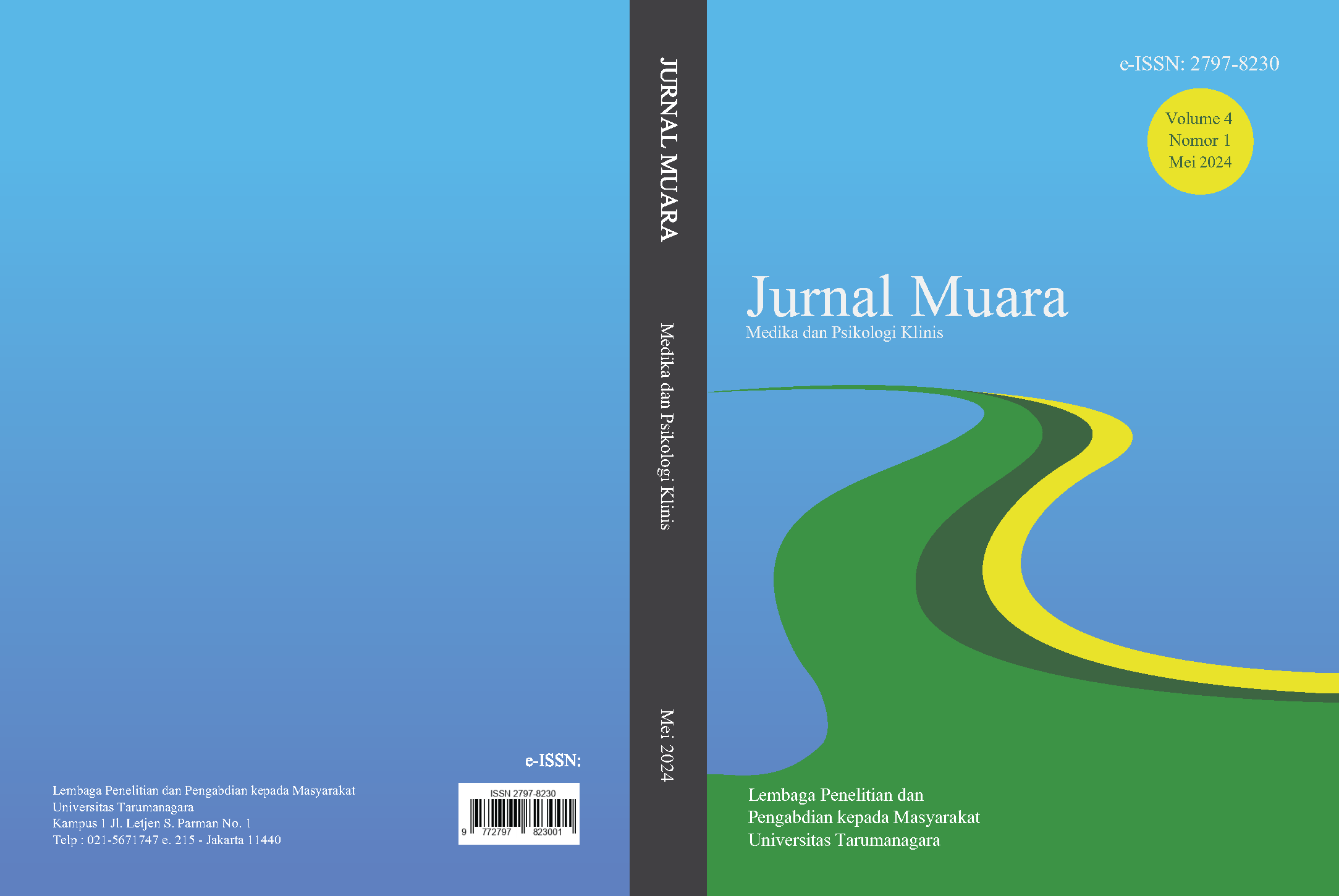PERAN TERAPI ANTIOKSIDAN PADA MELASMA
Main Article Content
Abstract
Melasma adalah penyakit hiperpigmentasi pada kulit yang terpajan sinar matahari dan dapat bersifat kronik rekuren. Penyebab pasti melasma belum diketahui akan tetapi spesies oksigen reaktif (ROS) akibat pajanan sinar ultraviolet (UV) diduga berperan dalam patogenesis melasma. Mekanisme pertahanan terhadap toksisitas ROS mencakup antioksidan enzimatik, yang terdiri atas katalase, superoksida dismutase (SOD), dan glutation peroksidase, serta antioksidan non-enzimatik. Dalam tulisan ini akan dijelaskan jenis-jenis ROS, antioksidan, dan stres oksidatif serta pengobatan melasma yang berhubungan dengan penggunaan antioksidan untuk menetralisir efek stres oksidatif.
Article Details

This work is licensed under a Creative Commons Attribution-NonCommercial-ShareAlike 4.0 International License.
This work is licensed under a Jurnal Muara Ilmu Ekonomi dan Bisnis Creative Commons Attribution-ShareAlike 4.0 International License.References
Addor, F. A. S. (2017). Antioxidants in dermatology. Anais Brasileiros de Dermatologia, 92(3), 356–362. https://doi.org/10.1590/abd1806-4841.20175577
Artzi, O., Horovitz, T., Bar-Ilan, E., Shehadeh, W., Koren, A., Zusmanovitch, L., et al. (2021). The pathogenesis of melasma and implications for treatment. Journal of Cosmetic Dermatology, 20(11), 3432–3445. https://doi.org/10.1111/jocd.14417
Babbush, K. M., Babbush, R. A., & Khachemoune, A. (2020). The therapeutic use of antioxidants for melasma. Journal of Drugs in Dermatology, 19(8), 788–792.
Correia, G., & Magina, S. (2023). Efficacy of topical vitamin C in melasma and photoaging: A systematic review. Journal of Cosmetic Dermatology, 22(7), 1938–1945. https://doi.org/10.1111/jocd.15337
Esposito, A. C. C., Cassiano, D. P., da Silva, C. N., Lima, P. B., Dias, J. A. F., Hassun, K., et al. (2022). Update on melasma – Part I: Pathogenesis. Dermatology and Therapy (Heidelberg), 12(9), 1967–1988. https://doi.org/10.1007/s13555-022-00803-4
Gonzalez-Molina, V., Marti-Pineda, A., & Gonzalez, N. (2022). Topical treatments for melasma and their mechanism of action. Journal of Clinical and Aesthetic Dermatology, 15(5), 19–28.
Grimes, P. E., Ijaz, S., Nashawati, R., & Kwak, D. (2019). New oral and topical approaches for the treatment of melasma. International Journal of Women’s Dermatology, 5(1), 30–36. https://doi.org/10.1016/j.ijwd.2018.09.001
Hseu, Y. C., Ho, Y. G., Mathew, D. C., Yen, H. R., Chen, X. Z., & Yang, H. L. (2019). The in vitro and in vivo depigmenting activity of coenzyme Q10 through the down-regulation of alpha-MSH signaling pathways and induction of Nrf2/ARE-mediated antioxidant genes in UVA-irradiated skin keratinocytes. Biochemical Pharmacology, 164, 299–310. https://doi.org/10.1016/j.bcp.2019.04.018
Kar, H. K. (2002). Efficacy of beta-carotene topical application in melasma: An open clinical trial. Indian Journal of Dermatology, Venereology and Leprology, 68(6), 320–322.
Nakai, K., & Tsuruta, D. (2021). What are reactive oxygen species, free radicals, and oxidative stress in skin diseases? International Journal of Molecular Sciences, 22(19), 10719. https://doi.org/10.3390/ijms221910719
Navarrete-Solis, J., Castanedo-Cazares, J. P., Torres-Alvarez, B., Oros-Ovalle, C., Fuentes-Ahumada, C., Gonzalez, F. J., et al. (2011). A double-blind, randomized clinical trial of niacinamide 4% versus hydroquinone 4% in the treatment of melasma. Dermatology Research and Practice, 2011, 379173. https://doi.org/10.1155/2011/379173
Negbenebor, N. A., Usatine, R. P., & Heath, C. R. (2023). Melasma. Cutis, 111(4), 211–212.
Xing, X., Dan, Y., Xu, Z., & Xiang, L. (2022). Implications of oxidative stress in the pathogenesis and treatment of hyperpigmentation disorders. Oxidative Medicine and Cellular Longevity, 2022, 7881717. https://doi.org/10.1155/2022/7881717
Zhen, A. X., Piao, M. J., Kang, K. A., Fernando, P., Kang, H. K., Koh, Y. S., et al. (2019). Niacinamide protects skin cells from oxidative stress induced by particulate matter. Biomolecules & Therapeutics (Seoul), 27(6), 562–569. https://doi.org/10.4062/biomolther.2019.122
Zhu, Y., Zeng, X., Ying, J., Cai, Y., Qiu, Y., & Xiang, W. (2022). Evaluating the quality of life among melasma patients using the MELASQoL scale: A systematic review and meta-analysis. PLoS ONE, 17(1), e0262833. https://doi.org/10.1371/journal.pone.0262833



